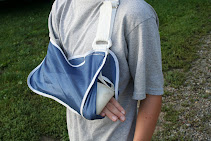How much care must one really need to show to be appreciated? How does one know that he has given enough care as needed? Is there such a thing as an overflow or an exaggeration of love or concern?
In the article, “Utah State Settles ADA Suit”, posted on June 5, 2007 , the case is reversed. Here we have an academic institution who tried to give as much as they could but their care fell short of the expectations of the students.
The article was based on a lawsuit filed by twelve blind students who “felt the school was not making an effort to provide adequate services”. According to the impaired students, they asked the school administration for an interpreter in their classes but got a stenographer, or someone not qualified to the task, instead. As a result, the students said, they were not able to participate in class discussions.
At the time the suit was filed, the school has seven deaf students using interpreters and about 25 deaf or partially deaf students using note-takers.
Hence the students filed a lawsuit against the school administration for failure to provide them with appropriate services under the American with Disability Act (ADA) and the Individuals with Disabilities Education Act (IDEA).
As a settlement, school administrators promised to have three more full-time interpreters to add to the seven other qualified interpreters.
Under the IDEA, public schools are required “to make available to all eligible children with disabilities a free appropriate public education in the least restrictive environment appropriate to their individual needs”.
Moreover, schools are also required to “develop appropriate Individualized Education Programs (IEP's) for each child”. The specific special education and related services outlined in each IEP reflect the individualized needs of each student.
The law also mandates that schools must follow certain procedures to implement the IEP.
The law also provides for “an agency representative who is qualified to provide or supervise the provision of special education…” and other individuals at the parents' or agencies discretion.
Sufficient care therefore is one that can ultimately and fully satisfy a need and not merely something that may be used as a substitute for a missing necessity.






